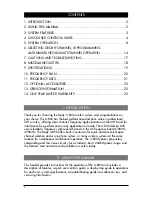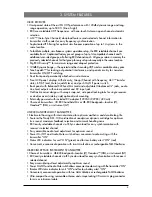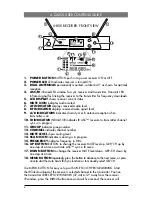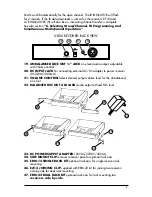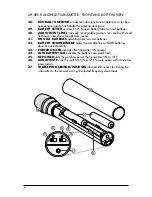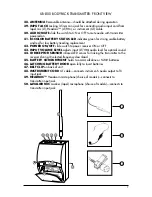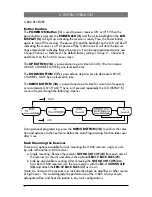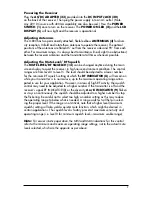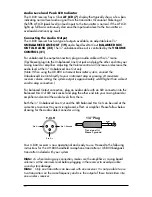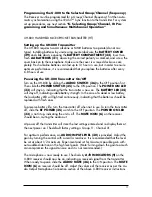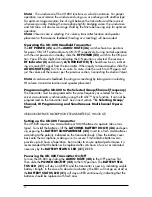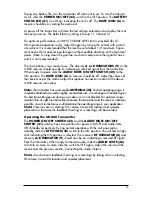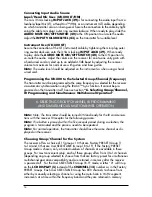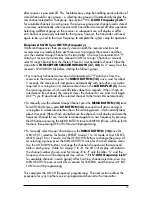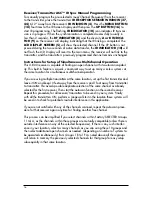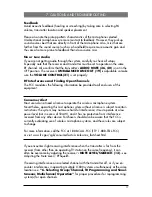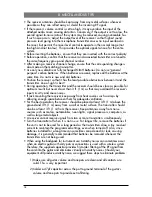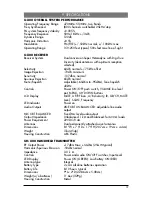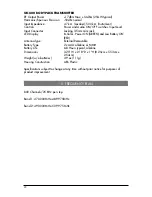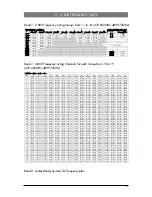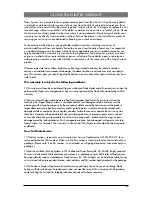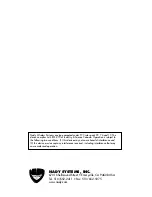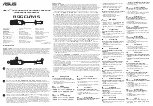
16
Receiver/Transmitter ASC™ IR Sync Manual Programming
To manually program the pre-selected Group/Channel (frequency) from the receiver
to the transmitter, place the transmitter’s IR RECEPTOR SENSOR WINDOW (37,
44) 6-12” away from the receiver’s IR WINDOW (4). press the MENU BUTTON
(18) four times to the IR Screen Display and then press the UP BUTTON (16) to
start IR programming. The flashing IR INDICATOR (10) icon indicates IR transmis-
sion is in progress. When the synchronization is completed successfully (usually in
less than 2 seconds), the RF INDICATOR (8) and the diversity A or B INDICA-
TOR (9) on the receiver will display, indicating that the IR linking is completed. The
LCD DISPLAY SCREEN (5) will show the selected channel. If the Up button is not
pressed during the two seconds of active data transfer, the IR INDICATOR (10) will
not flash, the LCD Display will revert to the main menu, the receiver will not link to the
transmitter, and the transmitter’s previously programmed channel remains unchanged.
Instructions for Setup of Simultaneous Multichannel Operation
This U-800 receiver is capable of finding an open channel with its autoscan capabil-
ity. This built-in feature is a quick, convenient way to set up many wireless systems at
the same location for simultaneous multichannel operation.
If you are using multiple transmitters at the same location, set up the first transmitter and
leave it ON and keep 10 feet away from the receivers and 1 foot away from transmitter
to transmitter. This avoids possible duplicate selection of the same channel as already
selected for the first receiver. Then start the autoscan function on the second receiver.
Repeat this procedure for all receiver/transmitters to be used in your system. Finally
with all the transmitters ON, perform a range walk test in the location these systems will
be used in to check for potential crosstalk interference in this application.
If you are not satisfied with any of the channels scanned, repeat the autoscan proce-
dure for that receiver again anytime for finding another free channel.
This process can be simplified if you select channels within Factory SELECTED Groups
11 to1A, as the channels within those groups are mutually compatible (unless there is
outside interference on any of the selected frequencies). If there is any such interfer-
ence in your location, select as many channels as you can using these 10 groups and
then select additional open channels as needed (depending on number of systems to
be operated simultaneously) from Groups 1b to 1F. As noted above all these groups
will retain in memory the previously selected channels for that group for easy setup
subsequently in that same location.

